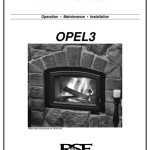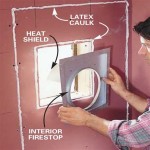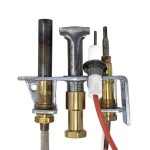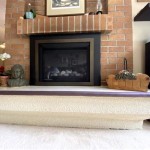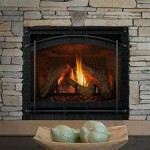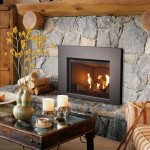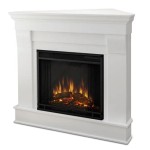Elevating Interior Design with Fireplace Corner Mantels
The fireplace has long been a focal point in homes, providing not only warmth but also a sense of ambiance and architectural interest. While traditional fireplace designs often center on a wall, corner fireplaces offer a space-saving and visually dynamic alternative. Corner fireplaces, however, present unique design challenges and opportunities, especially regarding mantels. Fireplace corner mantels are specifically designed to complement the angled structure of a corner fireplace, offering both functional and aesthetic benefits. Choosing the right corner mantel can significantly enhance the overall appeal of a living space, tying together disparate design elements and creating a cohesive and stylish interior.
The function of a fireplace mantel extends beyond mere aesthetics. It provides a surface for displaying decorative items, such as photographs, artwork, candles, and seasonal decorations. It can also serve as a practical shelf for storing remote controls, books, or other frequently used items. In the context of a corner fireplace, the mantel becomes even more crucial for defining the space and creating a balanced visual composition. A well-chosen corner mantel can transform an otherwise awkward corner into a sophisticated and inviting area.
Before delving into the specifics of corner mantel design, it is important to understand the fundamental principles of fireplace safety and construction. Building codes and safety regulations dictate clearances between the fireplace opening and combustible materials, including the mantel. Adhering to these guidelines is paramount to prevent fire hazards. The type of fireplace – whether it is a traditional wood-burning fireplace, a gas fireplace, or an electric fireplace – will also influence the mantel design and materials. Wood-burning fireplaces, for instance, require greater clearances than gas or electric fireplaces due to the higher temperatures involved.
The selection of materials for a corner mantel is a crucial decision that significantly impacts its appearance, durability, and fire resistance. Common materials include wood, stone, brick, concrete, and metal. Each material offers unique aesthetic qualities and performance characteristics, making the choice dependent on personal preferences, the overall design of the room, and budgetary considerations.
Key Point 1: Exploring the Diverse Styles of Corner Mantels
Corner mantels are available in a wide array of styles, each capable of conveying a distinct aesthetic. From rustic and traditional designs to sleek and modern interpretations, the possibilities are nearly endless. Understanding the nuances of each style can aid in selecting a mantel that complements the existing décor of the room.
Traditional corner mantels often feature ornate carvings, intricate moldings, and a classic silhouette. These mantels are typically constructed from hardwood, such as oak or cherry, and may be stained or painted to match the surrounding woodwork. The details often evoke a sense of historical elegance, making them a suitable choice for homes with a traditional or Victorian aesthetic.
Rustic corner mantels, on the other hand, embrace a more natural and unrefined aesthetic. They may be crafted from reclaimed wood, rough-hewn timbers, or natural stone. The emphasis is on showcasing the inherent beauty of the materials, with minimal ornamentation. Rustic mantels are well-suited for homes with a farmhouse, cabin, or country-inspired décor.
Modern corner mantels typically feature clean lines, minimalist designs, and a focus on functionality. They may be constructed from materials such as concrete, metal, or engineered wood. The emphasis is on creating a sleek and uncluttered look that complements contemporary architecture and interior design. These mantels often incorporate hidden storage or integrated lighting to enhance their functionality.
Transitional corner mantels bridge the gap between traditional and modern styles, incorporating elements of both. They may feature simple moldings, balanced proportions, and a mix of materials. Transitional mantels offer a versatile option that can complement a wide range of decorating styles.
Floating corner mantels are a popular choice for modern homes, creating a minimalist and space-saving design. These mantels appear to float on the wall, with no visible supports. They are typically constructed from a sturdy material such as wood or concrete, and are attached to the wall using hidden hardware. Floating mantels offer a clean and contemporary look that is both stylish and functional.
Key Point 2: Material Considerations for Corner Fireplace Mantels
The material selected for a corner fireplace mantel significantly influences its appearance, durability, and fire resistance. Each material possesses unique properties that make it suitable for different applications. Understanding these properties is crucial for making an informed decision.
Wood is a popular choice for corner mantels due to its versatility, affordability, and aesthetic appeal. Wood can be easily carved, stained, or painted to match any décor. However, wood is also combustible, and must be installed with adequate clearances from the fireplace opening to prevent fire hazards. Certain types of wood, such as hardwoods, are more fire-resistant than softwoods.
Stone is a durable and fire-resistant material that adds a touch of natural elegance to any room. Stone mantels can be crafted from a variety of materials, including marble, granite, limestone, and slate. Stone is typically more expensive than wood, but it offers superior durability and fire resistance. Stone mantels are well-suited for both traditional and modern homes.
Brick is another durable and fire-resistant material that is commonly used for fireplace surrounds and mantels. Brick mantels can be painted, stained, or left in their natural state to create a rustic or industrial look. Brick is relatively affordable and easy to maintain, making it a popular choice for budget-conscious homeowners.
Concrete mantels are becoming increasingly popular in modern homes due to their sleek appearance and durability. Concrete can be cast into a variety of shapes and sizes, allowing for a customized design. Concrete is also fire-resistant and relatively easy to maintain. However, concrete mantels can be quite heavy, requiring specialized installation techniques.
Metal mantels offer a modern and industrial aesthetic. Metal mantels can be constructed from a variety of materials, including steel, iron, and aluminum. Metal is fire-resistant and easy to clean, but it can also be expensive. Metal mantels are well-suited for contemporary homes with a minimalist design.
Engineered wood, such as MDF (medium-density fiberboard), is a cost-effective alternative to solid wood. Engineered wood can be painted or veneered to resemble natural wood, and it is less prone to warping or cracking. However, engineered wood is not as durable as solid wood, and it is more susceptible to water damage. It should also be properly sealed to prevent off-gassing of formaldehyde.
Key Point 3: Installation Considerations and Safety Precautions
Installing a corner fireplace mantel requires careful planning and attention to detail. Proper installation is crucial for ensuring the safety and functionality of the fireplace. It is always recommended to consult with a qualified contractor or fireplace installer to ensure that the mantel is installed correctly and safely.
Before beginning the installation process, carefully review the manufacturer's instructions and local building codes. Ensure that the mantel meets all applicable safety requirements. Measure the fireplace opening and surrounding area to determine the appropriate size and dimensions of the mantel.
Clearances between the fireplace opening and combustible materials are critical for preventing fire hazards. Building codes typically require a minimum clearance of 6 inches above the fireplace opening and 12 inches to the sides. These clearances may vary depending on the type of fireplace and the specific materials used for the mantel.
Properly support the mantel to ensure that it can withstand the weight of decorative items. Use appropriate hardware, such as brackets or anchors, to secure the mantel to the wall. Ensure that the hardware is rated for the weight of the mantel and its contents.
If the mantel is being installed over a combustible surface, such as drywall or wood paneling, install a non-combustible barrier between the mantel and the surface. This barrier can be made from materials such as cement board or metal flashing.
When installing a mantel over a gas fireplace, ensure that the gas line is properly sealed and that there are no leaks. Have a qualified gas technician inspect the installation to ensure that it is safe and code-compliant.
For electric fireplaces, the installation is typically simpler, but it is still important to follow the manufacturer's instructions and ensure that the electrical connections are properly made.
After the mantel is installed, inspect it carefully for any defects or potential hazards. Ensure that all connections are secure and that the mantel is level. Seal any gaps or cracks with caulk to prevent drafts and moisture damage.
Finally, consider the placement of decorative items on the mantel. Avoid placing flammable materials, such as candles or dried flowers, too close to the fireplace opening. Keep the mantel clear of obstructions that could block the flow of heat or create a fire hazard.
Selecting and installing a corner fireplace mantel is a multifaceted process that requires careful consideration of style, materials, and safety precautions. By understanding the various options available and following proper installation guidelines, homeowners can enhance the beauty and functionality of their living space while ensuring the safety of their home.

Corner Rustic Fireplace Mantel Custom Made For Inside And Outside Corners

How To Decorate A Corner Fireplace Mantel For The Holidays Making It In Mountains

Corner Fireplace Ideas Tags Diy Modern Home Design

Corner Stone Fireplace Mantel Idea

Fireplace Designs And The Rustic Mantel Trend Katie Jane Interiors

Diy Fireplaces Our Top Rated Free Project Plans Kreg Tool

How To Make A Corner Fireplace Mantel Look Good 15 Examples

Corner Mantel Wood Burning Stoves Living Room Fireplace Decor Stove Hearth

Fireplace Designs And The Rustic Mantel Trend Katie Jane Interiors

Modern Farmhouse Mantel Makeover Corner Fireplace Her Tool Belt
Related Posts

